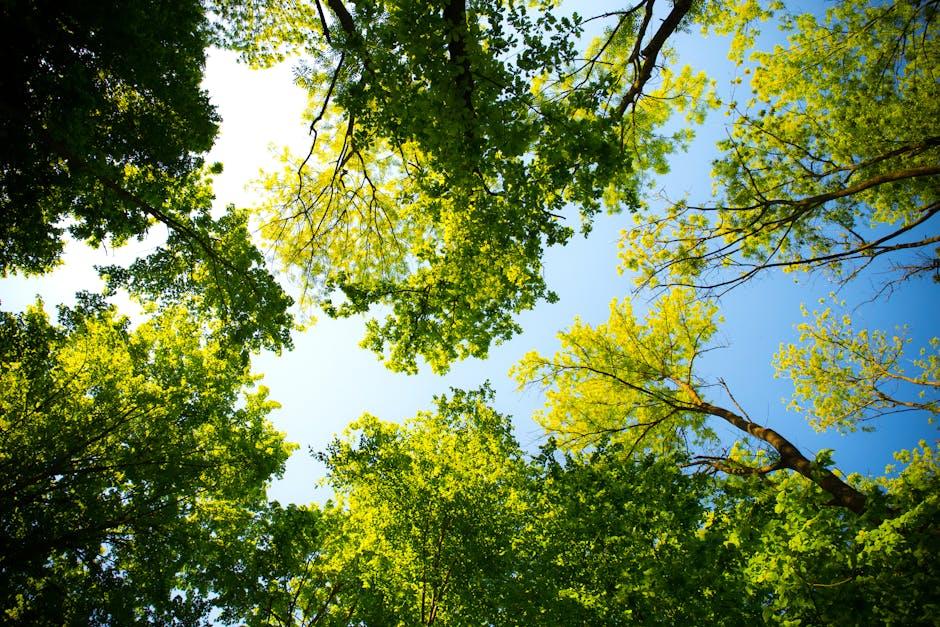In urban and suburban environments, noise pollution can be a pervasive issue that impacts both the quality of life for residents and the health of the ecosystem. One natural solution to mitigate this problem is the strategic placement of trees as sound barriers. Trees offer a range of benefits beyond just aesthetic appeal, including their ability to absorb and deflect sound waves. This article will explore the science behind using trees as natural sound barriers and the potential benefits they can provide for both humans and the environment.
Trees as Natural Sound Barriers
When it comes to utilizing trees as natural sound barriers, selecting the right tree species is crucial for optimal effectiveness. Species with dense foliage and thick branches, such as evergreen trees like spruce or fir, are excellent choices as they provide greater sound absorption capabilities[[1]]. Deciduous trees with broad leaves can also be beneficial, especially in urban areas where varying seasons impact noise levels.
Proper tree placement plays a significant role in maximizing noise reduction. Placing trees strategically between noise sources and the area requiring protection can significantly enhance their effectiveness as sound barriers. Additionally, creating staggered rows of trees can further enhance their ability to block and absorb sound waves[[2]].
To ensure long-term success as sound barriers, regular maintenance of trees is essential. Pruning branches to maintain density, watering adequately, and monitoring tree health are critical factors to sustain their noise reduction capabilities over time. Regular inspections for pests or diseases ensure the trees remain healthy and robust as sound barriers[[3]].
In urban settings, incorporating trees as sound barriers requires thoughtful consideration of factors like space limitations, tree root systems impacting infrastructure, and ongoing urban development. While trees offer numerous environmental and economic benefits, integrating them strategically in urban areas can effectively mitigate noise pollution and enhance overall quality of life for residents[[1]].
Q&A
Q: Do trees reduce noise pollution? How?
A: Trees can indeed help reduce noise pollution in certain situations. Some studies have shown that trees can lower noise levels by up to 50%, but for this effect to be significant, a tree barrier should be at least 50 feet deep[1]. Trees and shrubs have a limited impact on blocking noise, but they can absorb sound and create a more peaceful environment[2].
Q: What are the best trees and shrubs for sound barriers?
A: When considering trees and shrubs as sound barriers, holly trees and holly shrubs are popular choices as they provide year-round noise reduction and are effective in absorbing sound[2]. It is essential to choose dense and thick foliage plants to maximize the noise reduction benefits.
Q: Do trees or shrubs effectively reduce noise?
A: While trees and shrubs are not the most efficient blockers of noise, they can still contribute to reducing noise levels, albeit minimally. Trees are more effective when arranged in a barrier that is at least 50 feet deep to provide a notable noise reduction effect[1]. Additionally, choosing dense plants like holly trees and shrubs can enhance their ability to reduce noise[2].
Conclusion
while trees can provide some level of sound barrier in urban environments, it is essential to consider various factors such as tree species, density, and distance from the noise source to maximize their effectiveness. Research indicates that a combination of trees, shrubs, and solid barriers can work well together to reduce noise pollution significantly [3]. It is crucial to balance expectations and understand that trees alone may not entirely eliminate noise, but when strategically planted and managed, they can certainly contribute to creating a more peaceful and pleasant environment.
Simpsons Tree Services, Servicing Melbourne’s North Eastern Suburbs
Book a quote online at www.simpsonstrees.com.au




